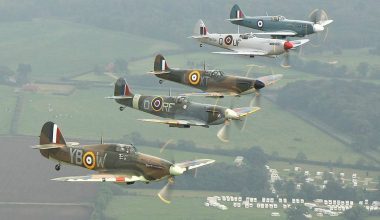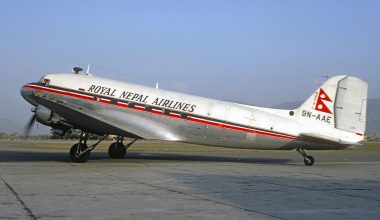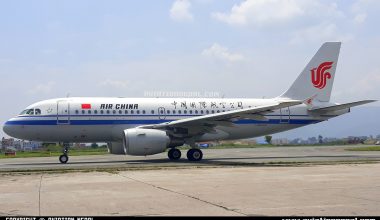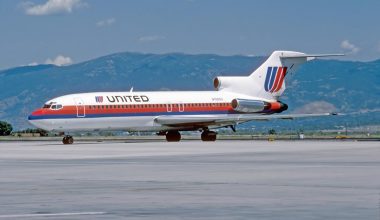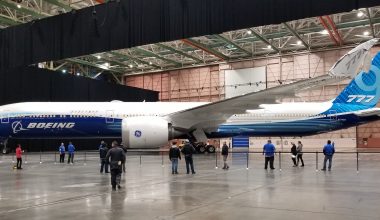Due to the obvious high operating price and the quad engine maintenance, Airbus 340 was grounded and unused for the time. It is the long-range; wide-body commercial passenger jet develops and produces by European Aerospace Company.

Airbus had an idea in the mid-70’s to improve A300 into a wide-body aircraft. Their main concern then was to build aircraft capable of flying over the Pacific, more seating capacity and long-range. Most U.S. airlines preferred a twin, while most Asian and European airlines preferred a quad. Airbus planned to develop both a twin and a quad jet to accommodate all airline customer classes and meet their radically different requirements.Then, in June 1987, A330 was portrayed with a twin-engine jet along with A340, a quad engine jet. On 25 October 1991 A340-200 conducted their first maiden flight.
[the_ad id=”28989″]In 1993 Lufthansa became the first airlines to operate A340-200. A340 comes with four models A340-200, -300, -500 and -600, in which they used CFM International engines in -200 and -300, where they used Rolls Royce Trent engines in -500 and -600 engines. A340-600 is Airbus’ longest jet ever made.
In 1987, Airbus decided to open the A330 and A340 for orders, and initially had over 130 aircraft ordered by ten different airlines. Eighty-nine of those orders were for the A340 alone, showing that Airbus was right on the money about the market demand for the aircraft.
| Details | Airbus A340-600 | Boeing 777-300ER |
|---|---|---|
| Length | 75.30 m | 73.90 m |
| wingspan | 63.45 m | 64.80 m |
| wingarea | 439.40 m2 | 452.00 m2 |
| engines | 4 | 2 |
| MTOW | 368,000 kgs | 351,534 kgs |
| range | 13,900 km | 14,600 km |
| total thrust | 996 kN | 1,026 kN |
| capacity | 380 passengers | 365 passengers |
Rise of B777
Boeing put the B777 onto the market in the late 90s. This aircraft had a long-range, seating capacity greater than the A340. It wasn’t heavy and has twin engine.
The Airbus A340 later set world records, flying back and forth from Paris to New Zealand in two days with only a five-hour stopover to refuel. It was the first direct flight between Europe and New Zealand, and the longest flight in the world before it was surpassed in 1997.
144 Boeing 777s were ordered in 2005 compared to only 15 Airbus A340s which resulted in fewer orders and order cancellation. Airbus declared the end of the A340 program on 10 November 2011; just twenty years after the first version took flight. Plans for an A340 neo developed into the current A350 programme.
The biggest issue facing the A340 was fuel consumption. Although due to their large size the -300 and -600 sold, there was less demand for -200 and -500. A340 -200 faced distribution challenges in particular, with none of them still in commercial service today. Lufthansa is the biggest A340 operator with 34 aircraft to date.When the 777 became more popular with the launch of the extended range 777-200ER in 1997 and airlines accumulated operational data upon this aircraft, it was apparent that the 777 outperformed the heavier and less fuel-efficient A340 and, as a consequence, the stalwart latest quad jet from Airbus began loosening grip to Boeing’s 777s.
According to trading activity from Airbus as of the period of May, the Airbus A340 had only 35 operators. Among these, only four operators used to have a fleet of more than ten aircraft. If we reflect at those flying more than 5 of the aircraft, this doubles to eight operators.
[the_ad id=”28989″]ETOPS regulations
At the period of the A340s production regulations governing twin-engined jet aircraft were quite strict leaving trans-Atlantic flights in these aircraft unpractical and costly. A few years later, in 1988, the FAA, now with three years of smooth, trouble-free trans-Atlantic 767 flight operations in the books, agreed to extend ETOPS to 180 minutes, this change put 95 percent of the Earth within reach of suitably qualified twin jets such as the 767. The stage had been set for the Boeing 777.
[the_ad id=”28989″]Considering the ever increasing constraints of the ETOPS regulations, four engines are no longer expected in operation. Four-engined planes are also less fuel-efficient unlike two-engine aircraft. That generally means they costs more to operate and have higher emissions.
The very first 777-200 became delivered to United on May 15, 1995 and weeks later the aircraft was granted 180-minute ETOPS authorization by the FAA, marking this the first single aircraft to acquire 180-minute ETOPS approval upon commencement. On 7 June 1995, United conducted the world’s first scheduled 777 operation to Washington Dulles through London Heathrow. The FAA raised the Powered Pratt & Whitney 777-200 ETOPS rating to 207 minutes the next year.
The 777 has proved to be a fearsome rival whose lasting power in the global marketplace has found it tough for Airbus to combat the higher efficiency side of the scale in particular, which is why the emergence of the A350-XWB. Adding to this the commercialization of the A340 market by Airbus’ own best-selling A330 and fuel costs this quickly turned out of reach in recent years and the deck was balanced almost from the start against the A340. And while Airbus definitely considers the A340 ‘s low overall sales frustrating, they do not reflect a program failure. The A340 was essentially a good Airbus aircraft although not to the extent as the A330.
[the_ad id=”28989″]The A340 was a successful aircraft, and the first attempt by Airbus to compete with Boeing 747. It was also the last quad jet to be designed to medium scale.

